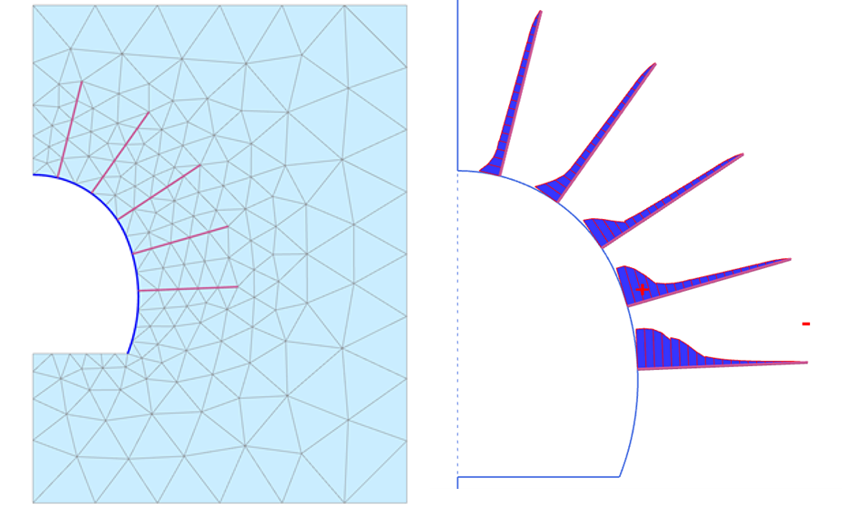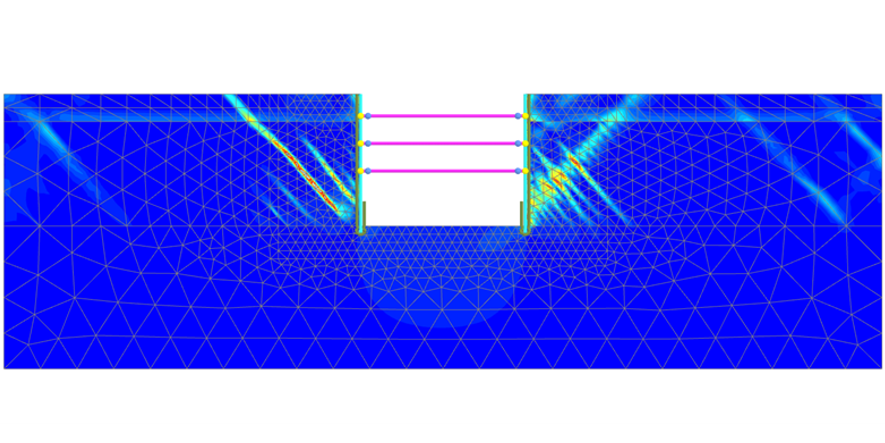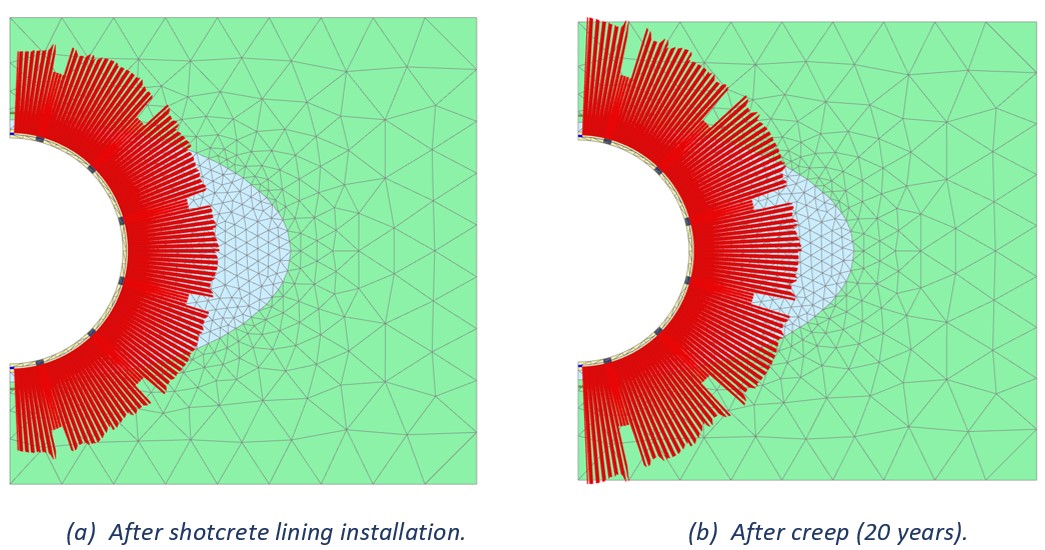Tunnel Excavation in Rock with PLAXIS 2D Considering 3D Effects
Available OnDemand
Explore the 2D excavation analysis of a tunnel in a rock mass. This webinar will particularly focus on PLAXIS 2D model construction, more specifically highlighting tunnel geometry, rock bolt definition, and the use of the convergence-confinement method for the consideration of 3D effects. Finally, extensive elements of comparison with an identical analysis run in FLAC2D geotechnical analysis software will be discussed.
In this webinar, you will learn about:
- Efficiently use the Tunnel Designer for modelling underground excavation
- Apply the Convergence-Confinement method in 2D tunnel analysis
- Define rock bolts using embedded beam elements
- Explore a results comparison between PLAXIS and FLAC

Analysis of a Vertical Excavation in Bedded Weathered Rock
Available OnDemand
Explore the analysis of a diaphragm wall for a 2D deep excavation in weathered chalk with two different constitutive models:
- Mohr Coulomb model (MC) where the chalk is assumed to be a uniform rock mass
- Jointed Rock model (JR) where a weak plane is introduced with lower strength parameters as compared to the chalk matrix
A sensitivity analysis will follow to investigate the influence of the orientation of the weak bedding planes.
You will learn about:
- How to use the Jointed rock model for modeling chalk
- How to model dewatering during a tunnel excavation process
- How to efficiently perform sensitivity analyses through Python scripting

Modeling Time-Dependent Behavior of Rock Masses in Deep Underground Excavations
Available OnDemand
This webinar focuses on the time evolution of the convergence following the excavation of a circular tunnel in claystone. Because of the considerably large initial stress values (due to the large depth of the excavation) and to limit the development of excessive normal forces, a yielding sprayed concrete lining of high bearing capacity is being placed. Special attention will be dedicated to the modeling of specific yield elements though a UDSM model.
You will learn about:
- How to introduce creep deformation in rock
- How to use power-law creep deformation in combination with MC failure criterion
- How to model yielding sprayed concrete lining in PLAXIS

View OnDemand
Webinar Presenter

Richard Witasse
Principal Product Manager
Geotechnical
Virtuosity, A Bentley Company
Recognized as an expert in geotechnical analysis and engineering, Richard Witasse has more than 15 years of experience in working with geotechnical digital tools and geotechnical finite element analysis software. After starting his career as a software engineer in the field of finite element analysis software for reinforced concretes structures, Richard became an application engineer and worked for the global leaders in geotechnical analysis software. Richard joined PLAXIS in 2008 and has always worked since the non geotechnical consulting, customer success and training for the many users of the most popular digital solutions for geotechnical engineering and analysis. Since 2018 Richard Witasse is Principal Product Manager with Bentley Systems.
/Virtuosity%20Branding/Virtuosity_Logo_2022-1-1.png?width=185&height=75&name=Virtuosity_Logo_2022-1-1.png)